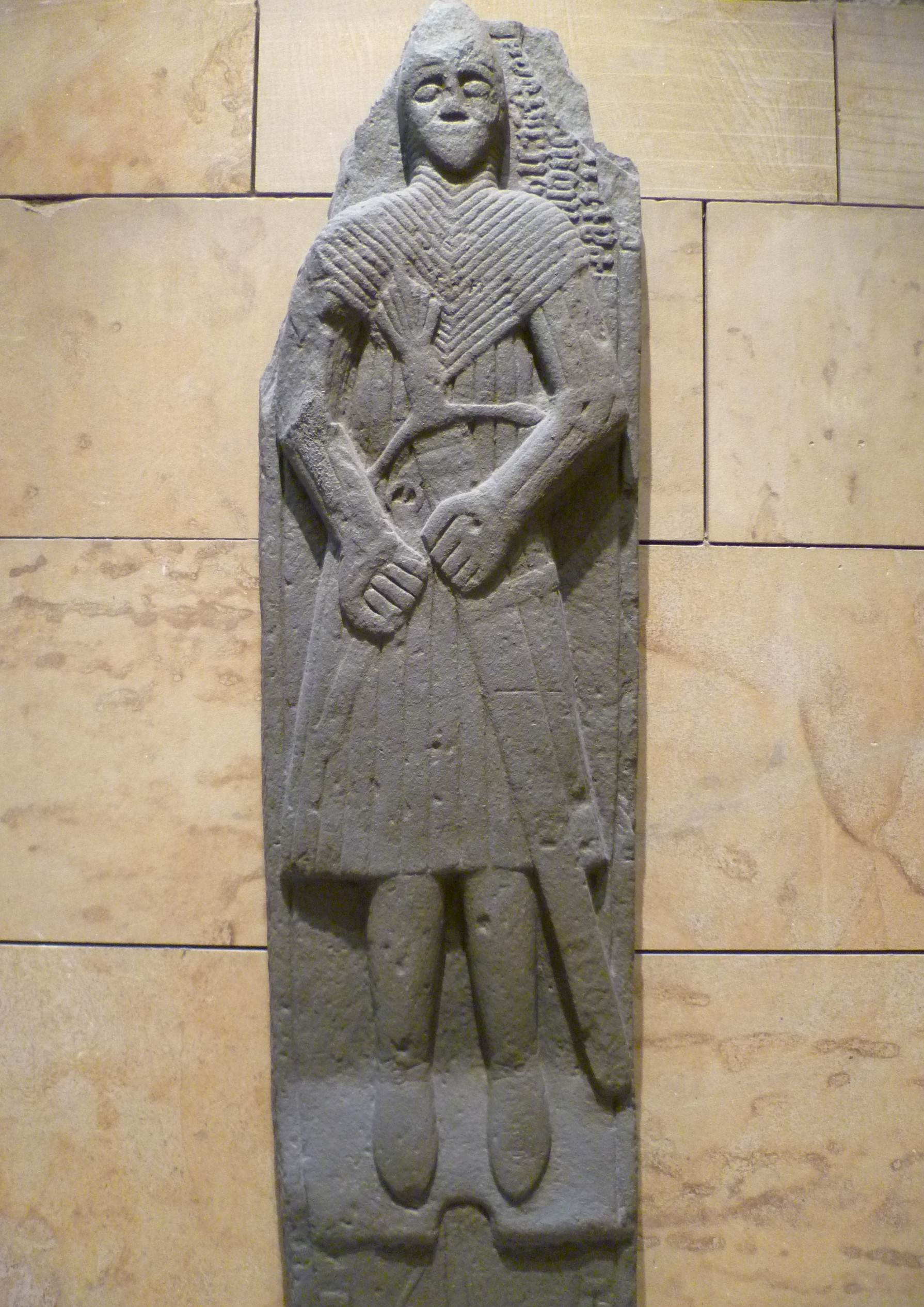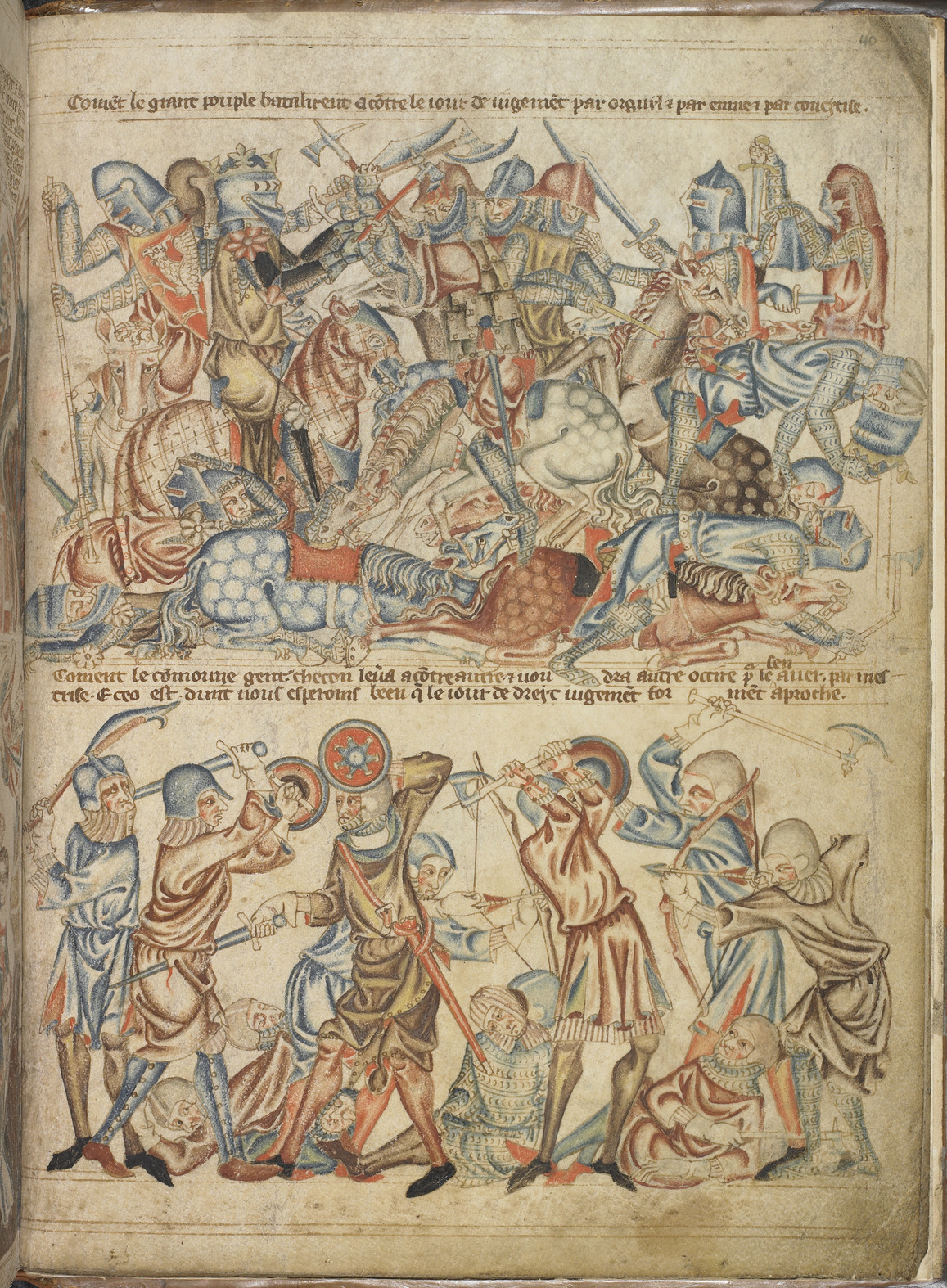Table of Content
The term "Claymore" evokes images of fierce battles, historical warriors, and legendary tales. But what is a claymore, exactly? In this article, we will explore the history, design, types, and cultural significance of Claymore, particularly focusing on their importance in Scottish history and beyond.
I. Understanding the Claymore
1. What is a Claymore Sword?
The Claymore sword holds a legendary place in Scottish history, renowned for its role in numerous famous battles and wars. Its name, meaning "great sword" in Scottish Gaelic, reflects its imposing nature and was most prominent between the 15th and 17th centuries. According to the British Museum, the Claymore is a formidable two-handed weapon. It is characterized by an iron blade adorned with stamped decorations, downward-curving quillons ending in quatrefoils, and a blade extending beyond its wooden handle.
🔔Learn more about the Sporran, a distinctive accessory that embodies Scottish culture. Check out "What is a Sporran? A Unique Symbol of Scottish Heritage" for insights.
2. Where Does the Name Claymore Come From?
The term "Claymore" comes from the Scottish Gaelic "claidheamh mòr," meaning "great sword," and originally referred to the two-handed sword used by Scottish Highlanders in the early 16th century. Although Claymore's meaning primarily describes this specific type of sword, there were actually three varieties of two-handed Scottish swords used in different regions, often collectively referred to as claymores by some writers. The term also extends to the basket-hilted swords, a distinct type of 17th-century military sword favored by the Scots. Historian and medieval arms expert Ewart Oakeshott noted, "We're really forced by common usage to go on using these quite misleading nineteenth-century collector's terms, even though we know now they are inaccurate."

3. Claymore Sword History
The claymore sword was the weapon of choice for Scotsmen during clan wars and battles against English borderers from 1400 to 1700. Its use reportedly dates back to the first Wars of Scottish Independence in 1296, with early sculptures showing soldiers wielding smaller, less refined versions of the iconic design. Legend has it that the Scots would throw a claymore onto the battlefield before combat, signaling their readiness to fight.

The sword became famously associated with William Wallace, earning the informal title "the William Wallace Sword" as it was his preferred weapon. After centuries of service, the Claymore's last recorded use was at the Battle of Killiecrankie in 1689, where Highland Scottish Clans loyal to King James VII of Scotland (James II of England) triumphed against King William of Orange's forces. However, their victory had little impact on the war's outcome and left their leader dead. The Jacobite advance ended the following month at the Battle of Dunkeld, marking the end of the Claymore's prominence in battle. Despite its decline, the sword remains immortalized in Scottish art and sculpture, celebrating its storied legacy.
II. Design Features of the Claymore
1. How long is a Claymore?
Historically, the archetypal Claymore stretched to an imposing 140 cm (55 in), comprising a 33 cm (13 in) grip paired with a formidable 107 cm (42 in) blade. Scottish Claymore Swords typically feature a broad double-edged blade that is tapering towards the point. The distinctive straight or slightly curved blade allows for powerful strikes and effective cutting movements. This considerable blade length empowered Highland warriors to unleash potent, sweeping strikes while maintaining a tactical advantage of distance over their adversaries on the battlefield.

Occasionally, the sword was embellished with a "Ricasso" —a distinct section of the blade just above the hilt, often shrouded or wrapped. This allowed the swordsman to "choke up" on the weapon, wielding it with the finesse of a half-sword technique.
2. How heavy is a Claymore?

3. Hilt and Grip Design

The hilt of a claymore is designed for two-handed use, allowing the wielder to leverage their strength for powerful swings. The grip is often long enough to accommodate two hands, and the crossguard is pronounced, helping to protect the hands during combat.
III. Claymore Sword and its Variations
Claymore has been applied to various Scottish swords featuring different hilt designs, leading to considerable debate among historians, scholars, and collectors. To address this confusion, the phrase "true claymore" or "claidheamh mór" is often used to specifically refer to the authentic version of the sword, distinguishing it from other related types.
1. The Two-handed Scottish Claymore (Highland)
In the early 16th century, the Highland Scots developed a specialized two-handed sword known as the Claymore, or claidheamh mór, distinguished by its double-edged blade and an extended hilt designed for two-handed wielding, featuring a unique openwork quatrefoil design on the crossguard. This versatile weapon was renowned for its cutting power and effectiveness in battles such as the Wars of Scottish Independence, clan conflicts, and skirmishes with the English from 1400 to 1700. One of its last prominent uses was during the Jacobite victory at the Battle of Killiecrankie in 1689. The design of the two-handed Claymore evolved to align with the battlefield tactics of its era, and its use continued into the Renaissance.
As firearms gained prominence, the Highland Claymore Sword gradually diminished in military application but remained a symbol of Scottish history, representing the indomitable spirit of the Highland warriors.
2. Flamberge Claymore Sword
The Flamberge Claymore is a unique type of sword recognized for its wavy or flame-shaped blade, referred to as a flamberge. Emerging in the late medieval period, around the 15th century, this design was intended to maximize damage when withdrawing from a wound. The undulating edge inflicted extra pain and injury upon being pulled from an opponent. The Flamberge Claymore was famous not only for its distinctive and menacing appearance but also for its practical advantages in battle.

These swords typically featured a broad, double-edged blade with varying degrees of waviness. The Flamberge design saw use across different regions and eras, enriching the diverse history of medieval weaponry.
3. Swept-Hilt Claymore
The Swept-Hilt Claymore is a distinctive two-handed sword that surfaced in Scotland during the late medieval era. Characterized by its unique hilt design, this Claymore features gracefully curved crossguards, or quillons, which enhance hand protection during combat. This swept-hilt configuration was designed to shield the wielder's hand from blows while enabling effective offensive strikes. The blade is typically broad and double-edged, optimizing its cutting capabilities.

The Swept-Hilt Claymore became increasingly popular in the 16th and 17th centuries, symbolizing the Scottish Renaissance and representing status and martial excellence among Highland warriors. Additionally, the ornate hilt design not only provided practical benefits in battle but also displayed the skilled craftsmanship of the swordsmiths who created them. Over time, variations in the blades' length and the hilts' decoration developed, reflecting personal preferences and regional styles.
4. Basket-Hilted Claymore
The Basket-Hilted Claymore is a unique two-handed sword from Scotland that rose to prominence between the late 16th and 18th centuries. Its most notable characteristic is the basket-shaped hilt, a sophisticated guard resembling a cage that offers exceptional hand protection during combat. This hilt typically incorporates a combination of bars and plates, creating a complex structure around the wielder's hand.

The design of the Basket-Hilted Claymore evolved in response to the growing use of firearms, as sworders sought enhanced hand safety. The basket hilt not only provided defense against incoming attacks but also facilitated various gripping techniques, increasing its versatility in battle. The blades themselves came in different designs, ranging from broad cutting edges to more slender, tapered thrusting points. These swords became emblematic of Highland warriors and were often carried as a mark of status. The popularity of the Basket-Hilted Claymore extended beyond Scotland, influencing the creation of similar basket-hilted swords in other parts of Europe.
IV. The Claymore Sword: Significance in History
1. Battle of Bannockburn (1134)
At the Battle of Bannockburn, Scottish warriors wielded their formidable Claymores in a fierce confrontation against the English army led by King Edward II. The Claymore's exceptional cutting power and extended reach played a crucial role in the Scottish triumph. This decisive victory not only solidified Scotland's independence but also showcased the nation as a formidable military power.

2. Wars of Scottish Independence (1296-1357).
During the Wars of Scottish Independence, Claymore swords were pivotal in the fight against English domination, embodying the spirit of resistance among Scottish warriors. These swords became potent symbols of Scottish nationalism, admired for their effectiveness in close combat and their role in rallying a nation determined to assert its sovereignty.

3. Jacobite Uprisings (1688-1746).
Conclusion
The Claymore is more than just a sword; it symbolizes heritage, strength, and resilience. Through centuries of history and culture, the Claymore has maintained its significance as a powerful weapon representing Scotland's storied past. Whether as a piece of history, a tool for martial practice, or a captivating element of popular culture, the Claymore continues to intrigue and inspire.
Regardless of how you engage with this legendary sword, understanding "what is a claymore" goes beyond its physical form—it's about appreciating the rich tapestry of history, culture, and art that it represents.
Frequently Asked Questions
What is the difference between a Greatsword and a Claymore?
A greatsword refers to a specialized type of two-handed sword that is too lengthy to be worn on the body and too large to wield effectively with one hand. A Claymore is a specific variation of this Scottish greatsword.
What is the difference between a Bastard sword and a Claymore?
Regarding design, bastard swords offer a more comprehensive range of blade variations and are typically slimmer than Claymores, often featuring a reinforcing mid-rib. Their blades exhibit a more pronounced taper, culminating in a sharp point ideal for thrusting. In contrast, Claymores are characterized by an unsharpened ricasso near the hilt and a more rounded tip.
Which is more robust, the Claymore or Katana?
The strength of the Claymore and Katana is often a matter of personal preference; the Claymore's durability is well-suited for European combat, whereas the Katana is renowned for its precision and adaptability in Japanese martial arts.
Did the Vikings use Claymores?
No, neither type of Claymore was known to the Vikings. The Norse favored one-handed swords, which served as sidearms to their spears and could be effectively used alongside their shields. Due to the limited availability of metal, crafting such a long sword was impractical; instead, they relied on two-handed axes as their primary shock weapon.
Did Claymore's swords serve ceremonial purposes?
Claymore swords were not only used for battle but also had a ceremonial meaning. Scottish chieftains carried them during processions and special occasions to show their authority and prestige.











